First introduced in 2009 and face-lifted in 2012, the Opel Astra ‘J’ series may have been replaced in European and other markets by a successor model in 2015, but remains in production and soldiers on in some markets, including Jordan. A long-running survivor, the Astra ‘J’ was first developed during the German brand’s General Motors era and continues after its historic ownership change to the Peugeot-led Stellantis (nee PSA) group. But most importantly, a recent test drive reveals just how relevant the sometimes overlooked Astra still is.
Put somewhat on the back burner by General Motors during the twilight years of its long association with the American automotive giant, Opel’s limelight may have been obscured somewhat, but nevertheless continued to do what they have always done best, and make solid, dependable, comfortable and understated yet well-engineered middle of the road mainstream cars. A great example of the Opel ethos, the Astra’s conservative yet contemporary aesthetic is a discreet design that steers clear of ostentatious overstatement, and has aged well in the face of flashier fads and fashions.
Competing in the compact saloon C-segment alongside rivals such as the Volkswagen Jetta, Nissan Sentra, Hyundai Elantra and many others, the Astra ‘J’ design still holds up well with its smooth curvatures, swept back fascia, and long, low arcing roofline. Sitting with a sense of purpose with its subtly bulging bodywork and sculpted character lines, the Astra’ grounded and sporty look is emphasized by a prominent sill crease that rises and blends into the rear wheel-arch, and built-in rear spoiler jutting from the edge of its high-set boot.
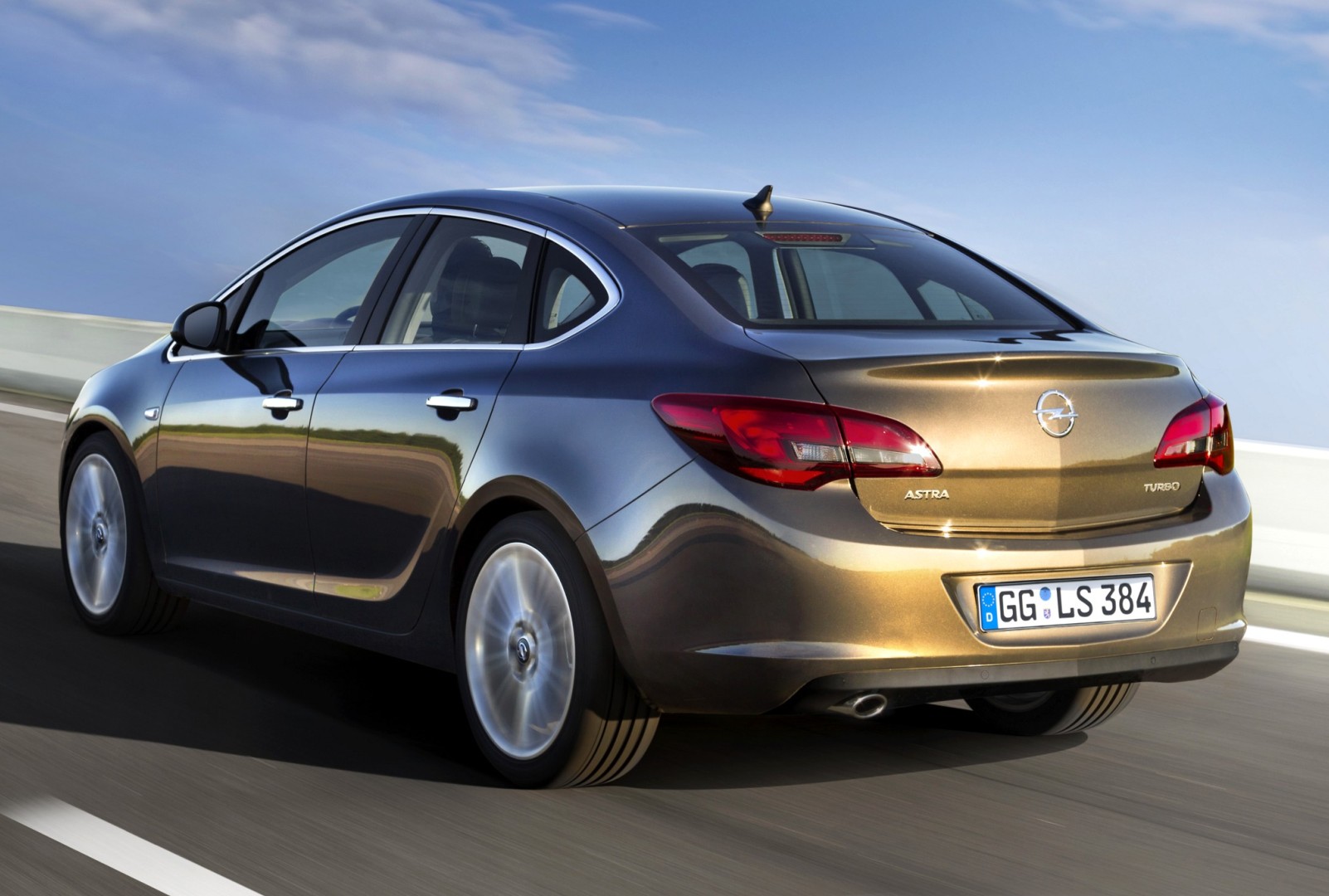 Virtually unaltered in visuals since 2012, the Astra ‘J’ has nevertheless gained more powerful downsized engines, and has never driven better for it. Last driven locally many years ago in hatchback guise with an underwhelming naturally-aspirated 1.6-litre engine, the Astra’s current turbocharged direct injection 1.4-litre four-cylinder engine is however much improved with its punchy 138BHP output delivered at a 4,900-6,000rpm plateau. More relevant to daily driving and immediately evident is the Astra’s significantly enhanced and generously confident 148lb/ft torque, available throughout a broad 1,850-4,900rpm range, and peaking at 162lb/ft on temporary overboost.
Virtually unaltered in visuals since 2012, the Astra ‘J’ has nevertheless gained more powerful downsized engines, and has never driven better for it. Last driven locally many years ago in hatchback guise with an underwhelming naturally-aspirated 1.6-litre engine, the Astra’s current turbocharged direct injection 1.4-litre four-cylinder engine is however much improved with its punchy 138BHP output delivered at a 4,900-6,000rpm plateau. More relevant to daily driving and immediately evident is the Astra’s significantly enhanced and generously confident 148lb/ft torque, available throughout a broad 1,850-4,900rpm range, and peaking at 162lb/ft on temporary overboost.
Gaining an additional 23BHP and 34-48lb/ft, the 1.4-litre Astra makes considerable performance and efficiency improvements including 8.4-second 0-100km/h acceleration, 205km/h top speed and estimated 6.4l/100km combined fuel consumption. Well-suited to its smooth shifting 6-speed automatic gearbox, the front-drive Astra 1.4-litre engine is designed to perform well at relatively low revs. With a broad torque sweet spot that allows for confident on-the move flexibility whether pottering around in town or overtaking on the open road, the Astra meanwhile seamlessly builds up and transitions to its maximum power range by just 4,900rpm.
Quick-spooling with negligibly little of the low-end lag often associated with turbocharged cars being detectible, the Astra’s 1.4T engine comes on boost and pulls with meaningful confidence from early on, set to a subtly percolating and gurgling intake soundtrack, reminiscent of its very powerful Opel GTC OPC (aka Vauxhall GTC VXR) hot hatch coupe sister model. Effortlessly confident from standstill and through revs, the Astra 1.4T proved surprisingly quick for its comparative class, but in true Opel fashion, its ride quality also felt like that of a larger, more expensive car.
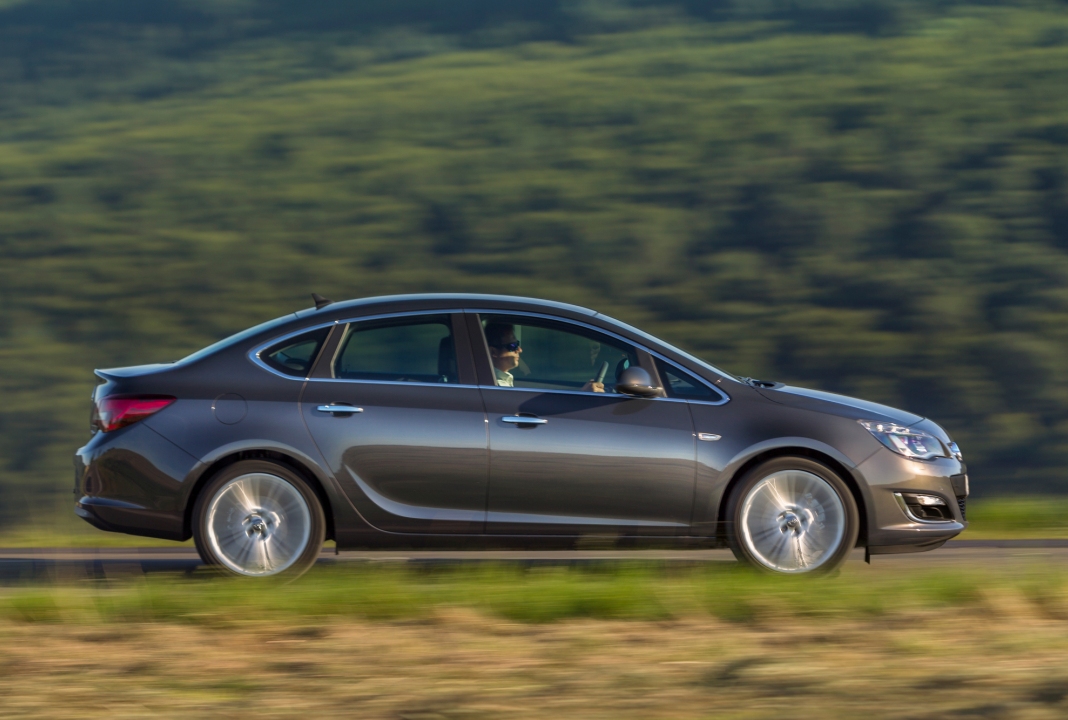 A confident and comfortable riding car in the tradition of German cars developed for high speed autobahns, the Astra saloon rides with a planted stability often associated with premium brand cars and more sophisticated suspension than its front MacPherson strut and torsion beam rear set-up. Dispatching lumps and bumps in a settled and forgiving manner during a brief test drive on Amman roads, the Astra also benefitted from right-sized 215/60R16 tyres that well compromise absorption and grip, while retaining better steering feel than wider, more fashionable tyres and wheels.
A confident and comfortable riding car in the tradition of German cars developed for high speed autobahns, the Astra saloon rides with a planted stability often associated with premium brand cars and more sophisticated suspension than its front MacPherson strut and torsion beam rear set-up. Dispatching lumps and bumps in a settled and forgiving manner during a brief test drive on Amman roads, the Astra also benefitted from right-sized 215/60R16 tyres that well compromise absorption and grip, while retaining better steering feel than wider, more fashionable tyres and wheels.
A refined cruiser with a reassuringly mature ride and meaty ‘twitch-resistant’ steering, the Astra saloon felt like a bigger car, but handled with much of the nimble agility expected of a compact car. Turning in tidily and responsively with a good degree of resilience to under-steer and accurate if not overly nuanced steering, the Astra proved eager and nippy through narrow roads, yet remaining reassuringly committed with good rear grip levels. Though comfortable, the Astra kept cornering lean well in check, and seemed to have good vertical and rebound control.
Quiet and comfortable inside, the Astra has an unostentatiously non-precious near-luxury ambiance inside with good padding, textures, fabrics, solid quality and assembly, and conservatively utilitarian styling. With plenty of user-friendly buttons rather than touch pads, it also has an accommodating and well-adjustable driving position, and a chunky upmarket multi-function steering wheel. Meanwhile, boot space is generous, boot access is adequate, and rear room and sightlines are decent for its segment. Equipment levels cover the most important comfort and safety features including front and side airbags, and electronic stability and traction control.

- Specifications: Opel Astra Sedan 1.4T
- Engine: 1.4-litre, transverse in-line turbocharged 4-cylinders
- Bore x stroke: 72.5 x 82.6mm
- Compression ratio: 9.5:1
- Valve-train: 16-valve, DOHC, variable valve timing, direct injection
- Gearbox: 6-speed automatic, front-wheel-drive
- Power, BHP (PS) [kW]: 138 (140) [103] @4,900-6,000rpm
- Specific power: 101BHP/litre
- Power-to-weight: 98.2BHP/tonne
- Torque, lb/ft (Nm): 148 (200) @1,850-4,900rpm*
- Specific torque: 146.6Nm/litre
- Torque-to-weight: 142.3Nm/tonne
- 0-100 km/h: 10.2-seconds (estimate)
- Top speed: 205km/h
- Fuel capacity: 56-litres
- Fuel economy, urban / extra-urban / combined: 8.4- / 5.3- / 6.4-litres/100km (estimate)
- Fuel requirement: 95RON
- CO2 emissions, combined: 138g/km (estimate)
- Length: 4,658mm
- Width: 1,814mm
- Height: 1,500mm
- Wheelbase: 2,685mm
- Track, F/R: 1,541 / 1,551mm
- Luggage volume: 460-litres
- Kerb weight: 1,483kg
- Steering: Electric-assisted rack & pinion
- Turning radius: 11.5-meters
- Suspension, F/R: MacPherson struts / torsion beam
- Brakes, F/R: Ventilated discs / discs
- Tyres: 215/60R16
- Price, on-the-road: JD19,500
*Temporary overboost, lb/ft (Nm): 162 (220)
Rivals and alternatives
Nissan Sentra 1.6L
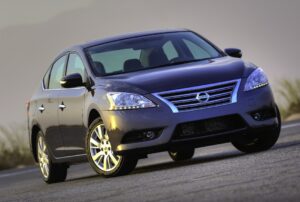
Contemporary in design yet spacious, the Nissan Sentra doesn’t sacrifice practicality at the altar of fashion, and isn’t overburdened with the unnecessary. Instead, it offers a ‘just right’ package for developing market roads in size, price, comfort, design and driving dynamic, with a supple ride, agile handling and perky 113BHP naturally-aspirated 1.6-litre engine.
Specifications: Engine: 1.6-litre, 16-valve DOHC, transverse 4-cylinders; Gearbox: CVT auto, front-wheel-drive; Power, BHP (PS) [kW]: 113 (114) [84] @5,600rpm; Torque, lb/ft (Nm): 113 (154) @4,000rpm ; 0-100km/h: 11-seconds (estimate); Length: 4,615mm; Width: 1,760mm; Height: 1,495mm; Wheelbase: 2,700mm; Headroom, F/R: 1000/932mm; Legroom, F/R: 1079/950mm; Luggage volume: 510-litres; Weight: 1,205kg; Suspension, F/R: MacPherson struts / torsion beam
Honda Civic 1.6L
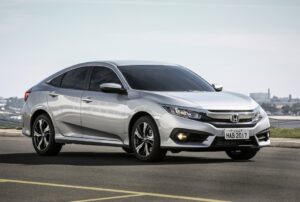
A mainstream compact saloon distinguished by striking design, smooth driving and responsive handling, the Honda Civic has matured and grown over the years. With a free-revving naturally-aspirated 123BHP 1.6-litre engine, the latest Civic ditches its previous smooth body for more assertively complex concave and convex surfacing and a low-slung roofline.
Specifications: Engine: 1.6-litre, 16-valve SOHC, transverse 4-cylinders; Gearbox: CVT, 7-speed auto, front-wheel-drive; Power, BHP (PS) [kW]: 123 (125) [92] @6,500rpm; Specific power: 77BHP/litre; Power-to-weight: 98BHP/tonne; Torque, lb/ft (Nm): 111 (151) @4,300rpm; 0-100km/h: 11.6-seconds; Top speed: 196km/h; Length: 4,630mm; Width: 1,799mm; Height: 1,416mm; Wheelbase: 2,700mm; Luggage volume: 519-litres; Weight: 1,255kg; Suspension, F/R: MacPherson struts / multi-link
Mazda 3 Sedan 1.5L
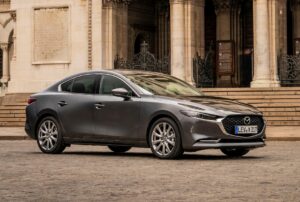
The Mazda 3’s combination of comfort, practicality, style and driving characteristics make it a standout in the compact saloon and hatchback segment, with eager-revving 110BHP 1.5-litre naturally-aspirated engine, a more premium-oriented ‘human-centric’ interior approach, and elegantly sporty, flowing and focused ‘Kodo’ design language.
Specifications: Engine: 1.5-litre, 16-valve DOHC, transverse 4-cylinders; Gearbox: 6-speed automatic, front-wheel-drive; Power, BHP (PS) [kW]: 110 (111.5) [82] @6,000rpm; Torque, lb/ft (Nm): 107.6 (146) @3,500rpm; 0-100km/h: 11-seconds (estimate); Top speed: 183km/h; Length: 4,660mm; Width: 1,795mm; Height: 1,440mm; Wheelbase: 2,725mm; Headroom, F/R: 965/947mm; Legroom, F/R: 1,075/891mm; Luggage volume: 444-litres; Weight: 1,300kg (estimate); Suspension, F/R: MacPherson struts / torsion beam






























Recent Comments